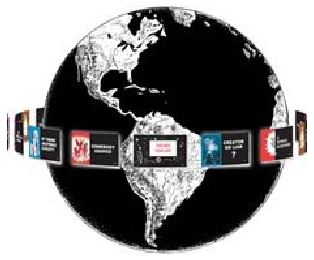New Danish Bible Illustrates Fallacy of Modern Bibles
A new Danish Bible has been attacked for removing the word “Israel” from many verses. When accused of being anti-Semitic, the Danish Bible Society explained that the intent was to help a secular reader who might confuse the Israel in the Bible with the present nation of Israel.
This is a classic example of people posing as translators, who introduce their own interpretation into the scripture. A true translator looks for an exact word in the new language to match the one in the old language. Obviously, that’s not always possible, but he still attempts to duplicate the same concept in the new language that was intended by the writer in the previous language.
Although the Danish Bible Society made a few of the changes in the Old Testament, the majority were in the New Testament. Luke 4:25 is an example of how convoluted such an interpretation can become. In the KJV it reads: “…many widows were in Israel in the days of Elias…” In the new Danish Contemporary Bible that is changed to: “…many Jewish widows in the time of Prophet Elijah.”
The word “Jewish” was not in use in Elijah’s time, and he was a prophet in the northern kingdom, not in Judah where the word “Jewish” eventually originated. And, since this is part of a point that Jesus was making, He looks confused in His knowledge of history.
“Israel” appears in over 60 places in the Greek manuscripts used by the Danes but only two remain unchanged in the DCB. Other examples include Matt. 2:21 “and he arose, and took the young child and his mother, and came into the land of Israel.” This is changed to “came home.” Several times “God of Israel” is simply replaced with “God.”
This is another example of translation purity being sacrificed in an attempt to accommodate the reader. If this distortion goes on for several generations of “translations,” then the original meaning can be completely lost. The only safe way for a reader with limited knowledge of the Bible to not be led astray, is to diligently teach him to understand a faithful translation.
In pages 129-133 of his new book, New King James: The Bridge Bible, author David W. Daniels cites an incident where one man failed to adequately teach his son from the preserved English Bible, the King James. This resulted in the serious distortion of many Bibles later marketed by Bible publishers.
Bible publisher Sam Moore had gifted his 11-year-old son with a beautiful, leather-bound, King James Bible. Trying to read it on his own, he gave up and returned it to his dad and asked, “Dad, with all the Bibles you publish, do you make one I can understand?”
Moore was not convicted for failure to teach his son to read the classic English of the King James. Instead, as head of the Thomas Nelson Bible publishers, he was already responsible for a growing variety of Bibles that posed as translations but were really man’s interpretations.
Moore went on to produce more Bibles laden with men’s ideas, including the New King James, falsely advertised as just an update to the King James with no changes in original meanings. Daniels proves that this was false advertising because the New King James contains changes in meanings that affect fundamental doctrines.
These changes are not in line with the historical meanings of Greek and Hebrew words as we see in the King James Bible. Instead, it reflects the changed meanings we find in modern Bibles.
The bottom line is that there is one faithful, accurate English translation today, the KJV, and this Danish Bible is just another example of the dozens that seriously depart from this time-honored, ministry-proven Bible.
- See more articles on related topics:
- Bible Versions
- Israel
- Bible Translation
- Modern Versions
Other Articles from September/October 2020:
More on Bible Versions:
Products of Interest:
-

New King James - The Bridge Bible
It is NOT a King James Bible! It promised to be a 5th edition of the KJV, preserving "the originally intended meaning of every verse." But that's not what happened.
-

Why They Changed the Bible
228 pages
See who is behind the gradual changing of modern Bibles. There’s no guessing about what these people believe. They will tell you, in their own words! 
Attack, The
See the behind-the-scenes struggle to destroy the King James Bible, and how God preserved it.-

Sabotage?
32-PAGE, FULL COLOR COMIC BOOK - See the struggle through the ages to keep God’s Word pure, and learn which Bible can be trusted... and why!



